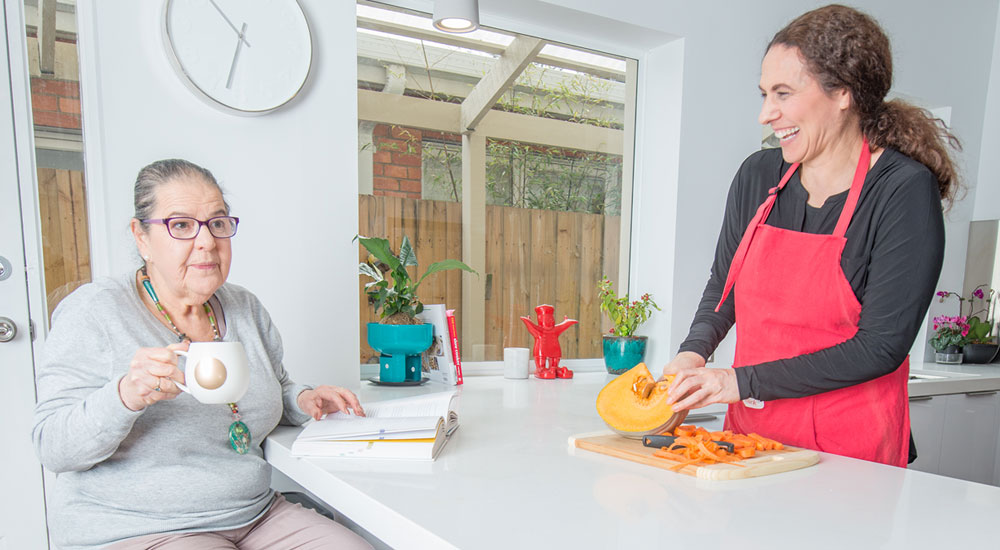Incontinence is a common issue among older adults. For people with dementia, this is even more probable an occurrence. It is therefore one of the most challenging care issues found by support workers caring for people with dementia.
Understanding Dementia and Incontinence
Dementia, being a neurodegenerative disorder, is more than just memory issues. As the condition progresses, the functional abilities of people with dementia begin to decline. One of them is the ability to use the toilet in a safe and independent manner.
It has nothing to do with the urinary system and/or digestive system – they are perfectly fine and work normally. It’s just that an individual couldn’t recognise the urge to “go” or in some cases, they might feel the sensation to urinate but do not have the awareness to recognise it or act on it.
Many times, patients with dementia have difficulty accessing the bathroom or they cannot remember the toileting process. Some may not be able to communicate their needs anymore.
If you are caring for a person with dementia and you notice the first signs of incontinence, seek medical attention first. Determine the possible causes and see if it is medical-related and treatable – sometimes, it could be just a urinary tract infection (UTI), side effects from medication, or constipation.
If you have done that and nothing reversible is identified, here are 10 helpful incontinence care tips that will help reduce the stress and mess for both seniors and caregivers:
10 Incontinence Care Tips for Caregivers
1. Improve the bathroom conditions– visibility, accessibility and safety
For a person with dementia, s/he might not be able to remember or recognise where the bathroom is. It is therefore important that you make it easy for them to find the bathroom quickly and easily.
Leave the door open and keep the lights on – this can make a big difference. Your loved one may not ask for assistance if they wake up at night so doing so will make it easier (and safer!) for them to use the bathroom even when it’s dark.
You can also consider labelling the door with a descriptive photo to help them recognise the bathroom. Apply colours that contrast with the wall to light switches, faucet and the toilet seat – this will draw their attention to the right places and guide them when using the bathroom on their own.
Remove things like plants, wastebaskets and other objects that may cause confusion with a toilet seat. Adding a bidet nozzle to your toilet is also a way to simplify personal care – it minimises the need for tissue rolls as one can spray the private areas clean instead.
2. Choose clothing that is easy to change and launder
Often, clothing also contributes to accidents – many patients with dementia struggle with mobility issues and arthritis so buttons or zippers can inhibit their ability to remove their clothing in time.
A wardrobe update will be wise. Replace clothing that have multiple fastenings, difficult clasps, tricky zippers or tight openings with elasticised waistbands, pull-on types or closures that are easier to use e.g. Velcro, snap buttons.
3. Schedule regular trips to the bathroom
As a caregiver, you can be proactive in scheduling trips to the bathroom. This would be particularly important if your loved one has lost the ability to communicate their needs.
A senior’s typical needs would be 4-6 bathroom trips a day and 1 at night so encourage them to visit the bathroom upon waking, every two hours during the day, immediately after meals and before bed.
Of course, this is just a general indicative. You’ll need to adapt the schedule to accommodate to your loved one’s habit and practice, but a bathroom schedule will help to minimise accidents.
4. Watch out for certain foods and drinks
Spicy food, chocolate and caffeine are some of the common food types that will worsen bladder and bowel symptoms. They irritate the urinary tract and digestive system which makes getting to the bathroom more difficult, so try to eliminate or at least reduce the intake of these foods:
- Coffee, tea and carbonated drinks
- Acidic fruits like oranges, grapefruits, lemon and limes
- Alcohol
- Spicy food
- Tomatoes/tomato-based products
- Sugar, honey and artificial sweeteners
5. Monitor fluid intake
On the same note, you should monitor their overall fluid intake. Too little or too much can trigger incontinence so adequacy is key.
In any case, do not limit fluids as this could cause dehydration and lead to urinary tract infection – ultimately, increased incontinence. Encourage overall fluid intake, but try to limit it before bedtime. Again, cut down on drinks like cola, coffee and tea which can act as diuretics that increase urination.
6. Waterproof mattress, sofa and chairs
Waterproof the furniture your loved one uses the most as these aren’t as easily cleanable like clothes, which can be thrown into the washing machine.
Some common protection includes waterproof mattress, sofa covers and seat protectors. There are also extra-large absorbent bed pads that you can lay over their bedding to further protect the bed so that fluid can be kept from soaking into the mattress.
It is advisable that you do this extra step even though you may have gotten a waterproof mattress already. This will help you get ahead of the problem and make clean-ups easier in the future.
7. Replace undergarments with incontinence briefs
On the same note, consider using padded undergarments or adult briefs. Many disposable ones fit comfortably nowadays and resemble just like underpants, and they have wonderful leak protection.
8. Have an incontinence kit on hand
This will be handy when leaving the house with your loved one. Pack a bag with clean-up essentials such as incontinence briefs, cleansing wipes and a change of clothes.
9. Managing dignity
Your loved one is in a very vulnerable state and more often than not, they will feel embarrassed about their condition. It is therefore important that you uphold their dignity and show empathy and compassion because really, all they are looking for is understanding and hope.
Alleviate any awkwardness by encouraging open and direct communication. Use a little gentle humour but be respectful. Reassure them that it is ok when accident happens. Be patient and empathetic.
10. Get help from professionals
Sometimes, it is just not possible to provide incontinence care on your own. Your home setting may not be adequate or your loved one’s condition has progressed into such extensive state that their needs can no longer be safely and comfortably met at home.
Under such situation, you may want to consider engaging professional help. They come in various arrangements – in-home caregiving that helps specifically with personal hygiene and toileting, 24-hour round the clock care and even nursing care – it depends on what you really need.
At the end of the day, you just want the best for your loved one. Placing them in the care of dedicated and trained professionals will ensure that their needs are safely and appropriately met, and that is all that matters.






